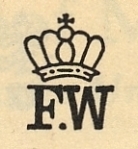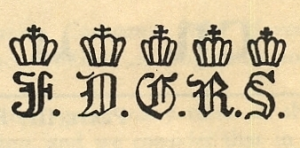Cyphers, Acceptance and Proofs
The subject of acceptance and proofing is the most important element of German military rifle research, almost everything relevant about a rifle under discussion comes down to these markings found on the rifle and various components. Although this is an indisputable fact, it is also indisputable that very few collectors fully appreciate the importance of acceptance in an evaluation. Even the distinction between the three terms is lost upon most collectors, who casually use “proof” for any marking found on a rifle.
In view of this observation, the following will outline the differences and relative importance of the three general forms of markings that determine a rifles originality and ultimately value. This blog post will focus on the Imperial era, however a lengthy article is available that covers 1870-1945, which will feature in the Winter 2017 MRJ (Issue 214).
IMPERIAL ERA
The Imperial era covers 1870-1918, this period created the framework that remained in existence until the end of the Second World War. Although each subsequent era made minor changes to the system of proofing and acceptance, there was continuity between the three periods that began with the Imperial era; what began in this period evolved, but the essential elements remained the same, both in purpose and application.
After the Franco-Prussian War of 1870 the German Empire was formed under the Kaiser, however this Empire consisted of four semiautonomous states, – Prussia, Bavaria, Saxony and Württemberg, each of these states retained their own armies, there was no standing “Imperial German Army”. Only during war or national emergency did the control of the state armies passed to the Kaiser. The exception to this rule was the Kaiserliche Marine, or Imperial German Navy, which was from its founding an Imperial institution under the Kaiser and funded by the Reichstag (Imperial parliament).
Let us begin with a simple list of commonly encountered markings and their purpose:

Cypher (Crowned Letter) – The German Empire after unification consisted of four states, Prussia, Bavaria, Saxony and Württemberg, each state having its own army and general staff and only during war or emergency did the control of the armies pass to the Kaiser. The prominent marking on the right side of an Imperial era stock is the cypher (crowned initial) of the ruling King of the state whose army it was issued to.

This marking is often a useful tool to identify the army the rifle was issued to, the vast majority of rifles will carry the Prussian King’s cypher, though Bavarian and Saxon marked rifles are common. Bavarian rifles are the most distinctive, not only was Bavaria the most independent of the semiautonomous states, it had its own State Arsenal and often dragged its feet on changes the Prussians undertook. Further, the existence of the Kaiserliche Marine as an Imperial institution meant that the cypher and acceptance will have Imperial crown rather than a royal crown, underneath of which would be an “M” for Marine.

Proofs (An Eagle) – The only “proof” on a German military rifle is the fireproof (Beschußstemple); a marking that indicates the rifle has been proof tested using super-powered proof cartridges. This marking will be found three times on each rifle, the receiver, the barrel, and the bolt, – no other marking on a rifle is a “proof” and in all other cases it is incorrect. This marking is often useful in identifying the maker of the rifle, each state arsenal used a distinctive style of eagle, and the private manufacturers were supervised by state arsenals which used their respective arsenals stamps. The Kaiserliche Marine also used a distinctive fireproof, the Imperial Crown, this will follow the normal patterns along the left receiver, underside of barrel and bolt stem.

Acceptance (Crowned Letters) – This is the most important marking found on a rifle, it will tell you who made the rifle and when (roughly). Every factory engaged in military small arms production was assigned a military officer to supervise teams that inspected arms under his authority. These teams marked rifles and components with the inspection stamp of the officer in charge of their team. Every part will carry an inspection mark (crown over a Fraktur letter); what collectors call an “acceptance stamp” or acceptance. There are also numerous acceptance stamps that represent stages of a rifles assembly, the acceptance on the right receiver and on the barrel relate to receiver hardness and assembly/testing of the barreled receiver. The stock also has assembly acceptance that accounts for the assembly of the rifle.
The important thing to remember is that all of these markings are important when determining the authenticity of a rifle. No evaluation can be complete without an examination of these three types of markings, the most important of which are acceptance patterns. Every maker had their own distinctive pattern and they are remarkably consistent within ranges (date and suffix block). While the interpretation of these markings takes an extensive database, the general guidelines are simple:
- Fireproofs should match the maker, if it does not then look for other indicators the rifle was made by another firm.
- Be sure there are three acceptance stamps on the right receiver, if less the rifle probably was made by a depot and if four or more the rifle has been re-barreled.
- Lastly, acceptance on Imperial rifles is different than 1919-1945, it is common for several inspectors (different crowned initials) to be found on each rifle. The important thing looking for consistency of style of the markings. Each maker have distinctive styles and lettering, Fraktur tends to be distinctive to the author, each character can be written in a slightly different way and this applies to stamps also.